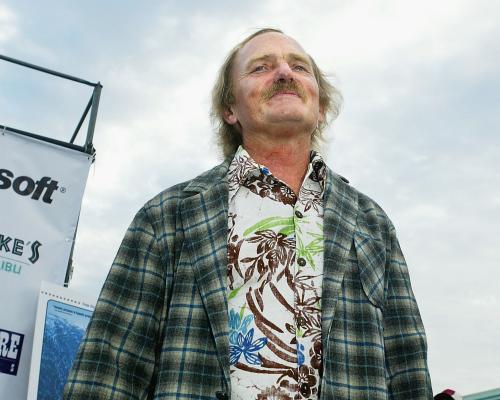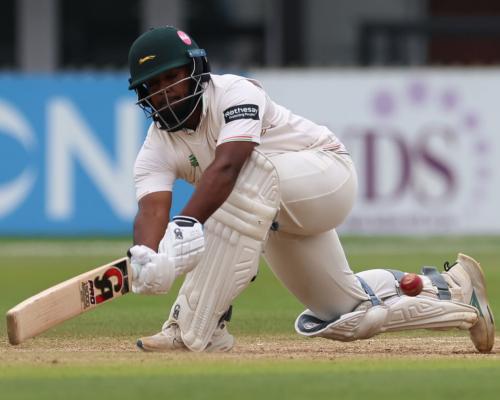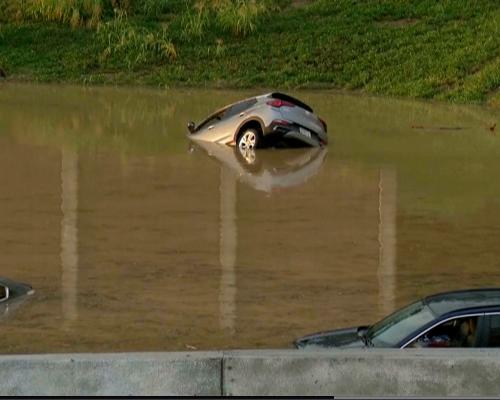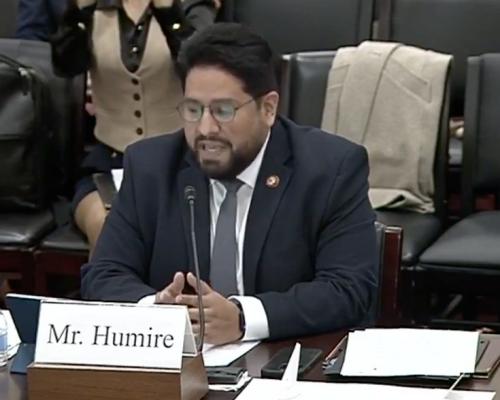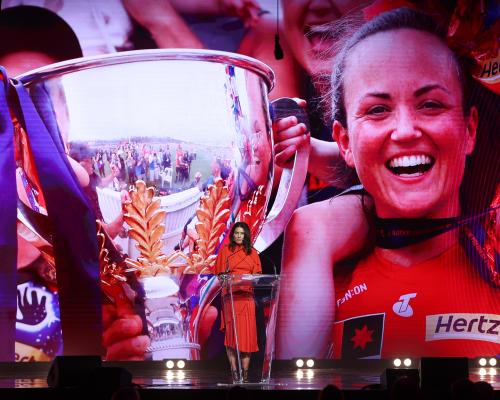
AFLW officials hope face-to-face access to players, kick-to-kick after the siren and entertaining football within a community setting will spark an upswing in attendances for the 10th season of the competition beginning on Thursday, and that overlap with two full men’s rounds will focus and not dilute engagement of clubs’ fans.
But behind the scenes the AFL is pursuing a radical overhaul of the women’s competition that would strip some teams of the rights to host matches at their traditional training bases, as head office eyes government assistance to help develop Goldilocks venues in Melbourne – those with the right size and amenities to suit the AFLW.
Emma Moore, general manager of AFLW, said this year’s two-week overlap with the AFL – when 18 top-level matches across the elite men’s and women’s competition will be held each week for the first time – gives every club a chance to engage fanbases already in the rhythms of footy.
“Doing those [seasons] separately, you’re not always able to get the best out of both of them,” she said. “It’s a hugely exciting opportunity for us to talk to our fans while they’re really deeply connected in the core part of the men’s season.”
This season is the second since Moore – a former NAB banking marketing executive – came on board to help accelerate growth of the competition that has struggled to capitalise on its early momentum and the worldwide boom in women’s sport.
The AFL Commission decided last week to lock in a late November grand final each year, meaning the women’s season will begin in the latter rounds of the men’s season for the foreseeable future.
After growing quickly to 18 teams and experimenting with different rules and season timing, the AFLW is now seeking to develop fan habits for a vibrant winter-spring season with a “distinctive” spectator experience to men’s football that keeps “footy at its core”, according to Moore.
“We have things that are unique to W in terms of how up and close and personal, how much access you have to players, that you can go onto the ground and do kick-to-kick afterwards, that our players are going to spend a whole lot of time with you after the game,” she said.
“So it’s about holding the heritage really true in terms of the football, and the rituals, and being at a ground like Windy Hill where people have got long memories. But it’s also about the distinctiveness of how women play the game, how they show up, and how their fans interact with them.”
Beyond this season, the trajectory of the competition will be changed by the decision by the AFL Commission last week to ratify a so-called “venue rationalisation plan” as part of an AFLW growth strategy.
Twenty-eight venues will be used this AFLW season, but executive general manager of football at the AFL, Laura Kane, anticipates that number will shrink in coming years.
“What was accepted [by the AFL Commission] as part of that growth strategy is that we form a view and finalise a view on where, how many and when with current stadia, and also what are the requirements,” she said.
The AFLW averaged a crowd of 2,692 per match in 2024 according to website Austadiums, for a total attendance of 290,000 for the season. By comparison, this year’s Super Netball season attracted 386,000 fans at an average of 6,441 per match.
Kane said the AFL didn’t want to lock itself into a specific number of venues yet, but the assessment will be driven by the needs of fans and broadcasters. “It’s focused on getting more people to those venues, so what is that right number? More people watching … so how does it need to look on TV and in broadcast? And how many, so how often are you traveling to places for, say, one game?”, she said.
Nine of the AFLW’s venues this year will be used only once. “To be able to take games like the Women’s Dreamtime to Darwin is something that we’re just so proud of, so we don’t want to lose the flexibility,” Kane said. “But there’s also a reality to what our club venues – for the most part which are training and administration facilities – can actually deliver and can actually host.”
Ikon Park in Carlton – which hosts the season opener between Carlton and Collingwood on Thursday night – was dubbed the “home of AFLW” by Victorian sport minister Steve Dimopoulos when its latest round of construction was completed in 2022 thanks to $20m in state funds, on top of $15m from the federal government.
But the small capacity of the inner North venue – which shrunk to 13,000 thanks to the renovation’s expansion of Carlton’s training facilities – has drawn frustration from fans given the grand final has sold out in the past two years.
The AFL-owned, 53,000-seat Marvel Stadium is used for concerts in November, and the prospect of a new boutique stadium has been raised by AFL chief executive Andrew Dillon in recent weeks.
Kane said the public funding for venues such as Ikon Park has been “unbelievable”, especially for AFLW. “That’s something that’s really special and something that we want to continue to support, particularly through government investment,” Kane said.
But she said until the AFL knew that Marvel Stadium would sell out, smaller grand final venues will continue to be used, adopting an approach borrowed from others further down the growth trajectory, such as Arsenal Women in England’s Women’s Super League.
“We met quite a few times with Arsenal Women, and they said: ‘don’t hope that your big stadia will sell out, know it will’,” Kane said.
“Naturally, our question was: ‘how did you know?’ [They said] you’re consistently selling out your home and away matches every single week, every single time that team takes the park, every seat is full, and you have a wait list and you have demand and you have yelling for more space, more tickets.
“We need to see that in W [during] home and away.”

